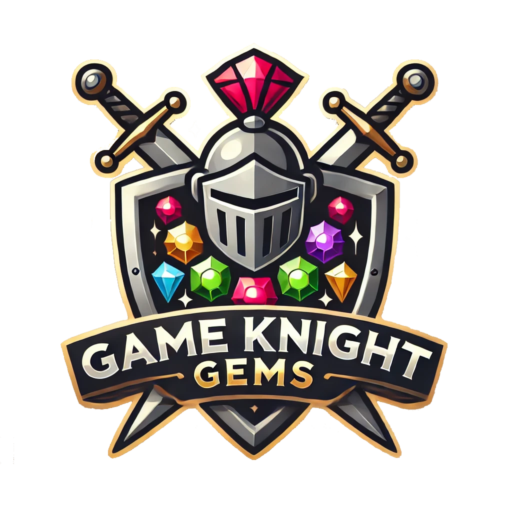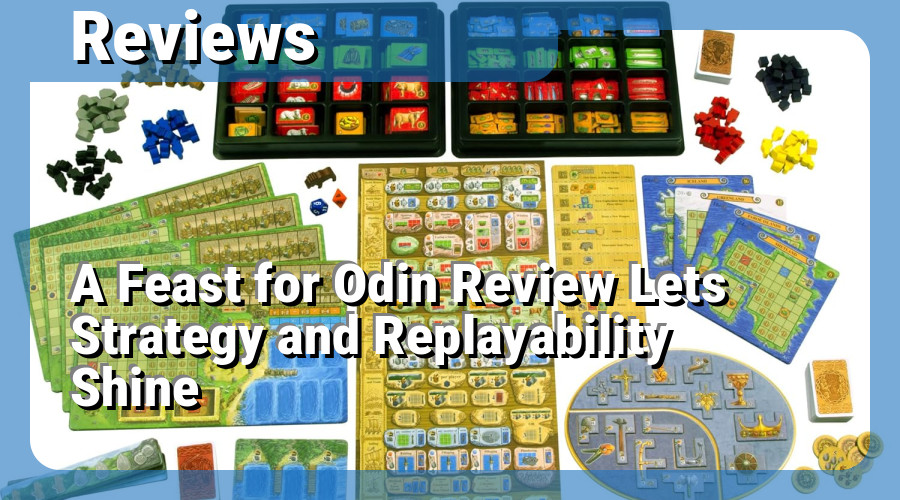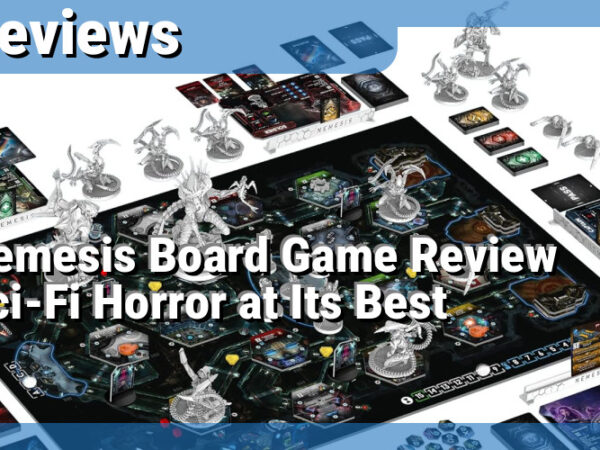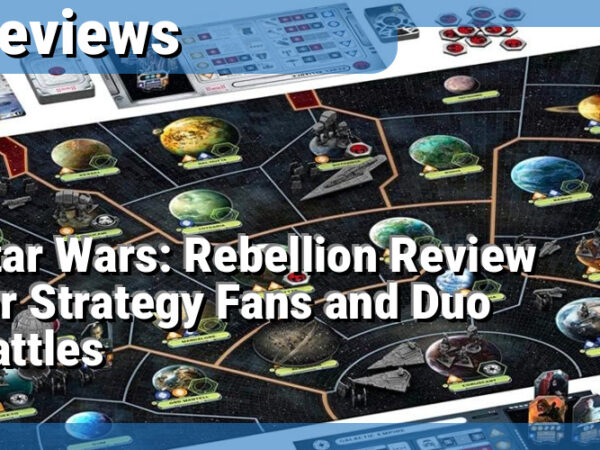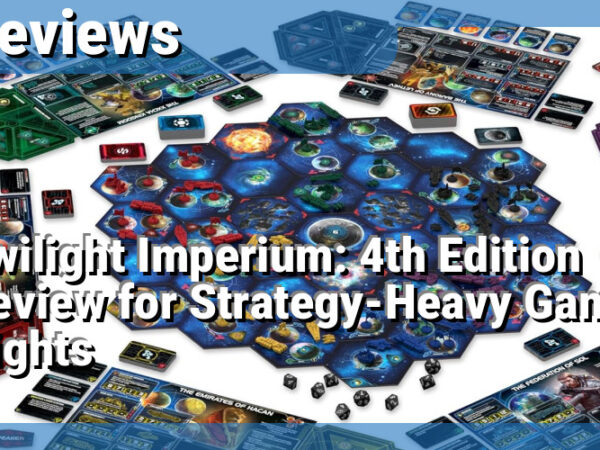Posts may contain affiliate links. Learn more in our Affiliate Link Policy.
Where to Buy A Feast for Odin: Amazon US | Amazon CA
A Feast for Odin Board Game Review: How It Plays, Who It’s For, and Why It Sticks
What is A Feast for Odin?
A Feast for Odin is a big, strategic board game designed by Uwe Rosenberg, known for hits like Agricola and Caverna. It’s a game about building a Viking life—farming, sailing, trading, crafting, and yes, feasting. It’s made for 1 to 4 players and usually runs about 2 to 3 hours. The game blends worker placement with puzzle-like tile arrangement in a way that’s both heavy and rewarding.
It’s one of those games I kept reaching for again and again, not just because I love complex systems, but because everything in the game ties together so well. From the first time setting it up to the tenth game months later, it hasn’t lost its grip.
Basic Gameplay
You start with a player board representing your Viking home. Your goal is to fill this board with different shaped tiles to cover negative points and gather income. Over 7 rounds, you’ll send your workers to over 60 spaces on a huge central board, doing things like:
- Gathering resources through hunting, fishing, or raiding
- Crafting goods like swords, jewelry, and tools
- Exploring islands for extra boards and bonuses
- Trading to upgrade tiles into more valuable ones
- Holding feasts to avoid penalties
- Expanding your settlement by filling more spaces
Turns are tight. With each round, every player gets more workers and more options. But the actions aren’t free; many require two or more workers, and competition for spots gets real. The limited time and massive space of options force some tough decisions. That’s where the game shines for me—it’s always pressing you to make the most of what you’ve got.
Why It Works
Action Selection That Feels Right
This is one of the cleanest examples of worker placement I’ve seen. You’re not just picking one space a turn—you’re planning a string of moves across tools, upgrades, and placement strategies. Some spaces will clearly help you this turn, others are setting up key moves a few rounds later.
What impresses me most is how logical it feels. Need food? Go whale hunting and upgrade the blubber. Want better tiles? Craft coins and trade up blues into greens or oranges. It’s all tied to this flowing economy of goods, and once it clicks, you start to feel like you’re building an actual Viking story, not just filling in shapes.
Tile-Puzzle That Stays Fun
Every item you get is a tile with a shape and color that you place on your board. You get points for covering negatives and leaving certain bonuses uncovered. Sounds simple, but it’s half the game. The real challenge isn’t just collecting the stuff—it’s how and where you place it.
Each round, you look at your board, your new tiles, and try to fit it all together. It’s like playing Tetris… but while also trying to manage a village. This side of the game satisfies the brain itch that loves clever spatial decisions. It doesn’t feel bolted on—it’s essential to making your Viking economy work.
Balance of Freedom and Focus
One of this game’s best traits is how open it is. There are dozens of action spaces and nearly limitless combos. But it never feels like a mess. The early rounds guide you into focusing on food and tools, then slowly widen as you can afford to explore, raid, or settle new lands. You can go heavy on boats and raiding, or ignore ships and run a farming engine. It supports different playstyles without punishing creativity.
Every time I play, I find new combos. In one game I completely ignored whaling and went deep into sheep breeding and silver. In another, I explored two islands and pushed hard into raiding. Both worked. That kind of flexibility matters a lot to long-term playability.
Things to Keep in Mind
Setup and Table Space
This game is massive. I’m not just talking about box size—though it is huge. The table footprint is no joke. You’ve got the main board, up to four player boards, islands, card decks, warehouses of goods, and the action board. You’ll need a full-sized table and some patience to organize the pieces. Setup runs around 15 minutes even when you know what you’re doing.
If that sounds like a lot, that’s because it is. This is not a game you pull off the shelf for a casual hour. It’s best when you’ve got time and a group that wants to really dig in. I’d call this a “weekend centerpiece” game—you build your game night around it, not plug it into a filler slot.
Overwhelming for New Players
First game? Expect wide eyes and lots of questions. Even with clear iconography and a very helpful rules book (seriously, one of the best), this game throws everything at you all at once. The action board alone has over 60 options.
In early plays, people freeze up or go for surface-level actions. That’s normal. The good news is that the systems tie together well, and by the second or third round, new players start to see the patterns. It helps a lot to sit down with someone who already knows the rules. That’s usually me—it really speeds up the learning curve.
Group Fit Matters
This is a thinker’s game. If your group likes relaxed party games or gets antsy after 90 minutes, this isn’t the one. It rewards repeated plays, forward planning, and eagle-eyed tile fitting. If that sounds like paradise, you’re going to love it. If it doesn’t, keep it off the shelf for now.
I’ve had the best games with 2 or 3 players. The solo mode is solid too (especially with the Norwegians expansion), but 4 players stretches the evening unless everyone is fast and familiar with the game.
It Gets Even Better: The Norwegians Expansion
If you’ve played the base game and enjoyed it, grab the Norwegians expansion. It adds new worker placement boards with smarter layouts, makes some underused spaces more efficient, and gives more island options. Plus, it introduces specific starting boards for each player, nudging strategies in different directions for more variety.
The expansion doesn’t fix a broken game—the base game is already strong—but it tightens and improves a few small areas. Every time I play now, it’s with the expansion mixed in.
Final Thoughts
A Feast for Odin is an epic strategy game that respects your time and effort. It rewards planning, creativity, and repeat play. It might scare off new players with its size and many decision points, but if your group is ready for a crunchy puzzle with tons of paths to victory, this one earns its keep.
I’ve played dozens of Euro games that promise depth and variety, but few have stuck with me like this. The mix of economic growth, tile placing, and action selection has just the right tug-of-war feel to make every turn matter. I’ve taught it more times than I can count, and not once has it fallen flat.
This is a keeper for any shelf built around strategy, heavy games, or Euro-style gameplay. If you’re hunting for something you can dive deep into for months or years—not just a simple one-and-done—A Feast for Odin is worth every minute of your table time.
